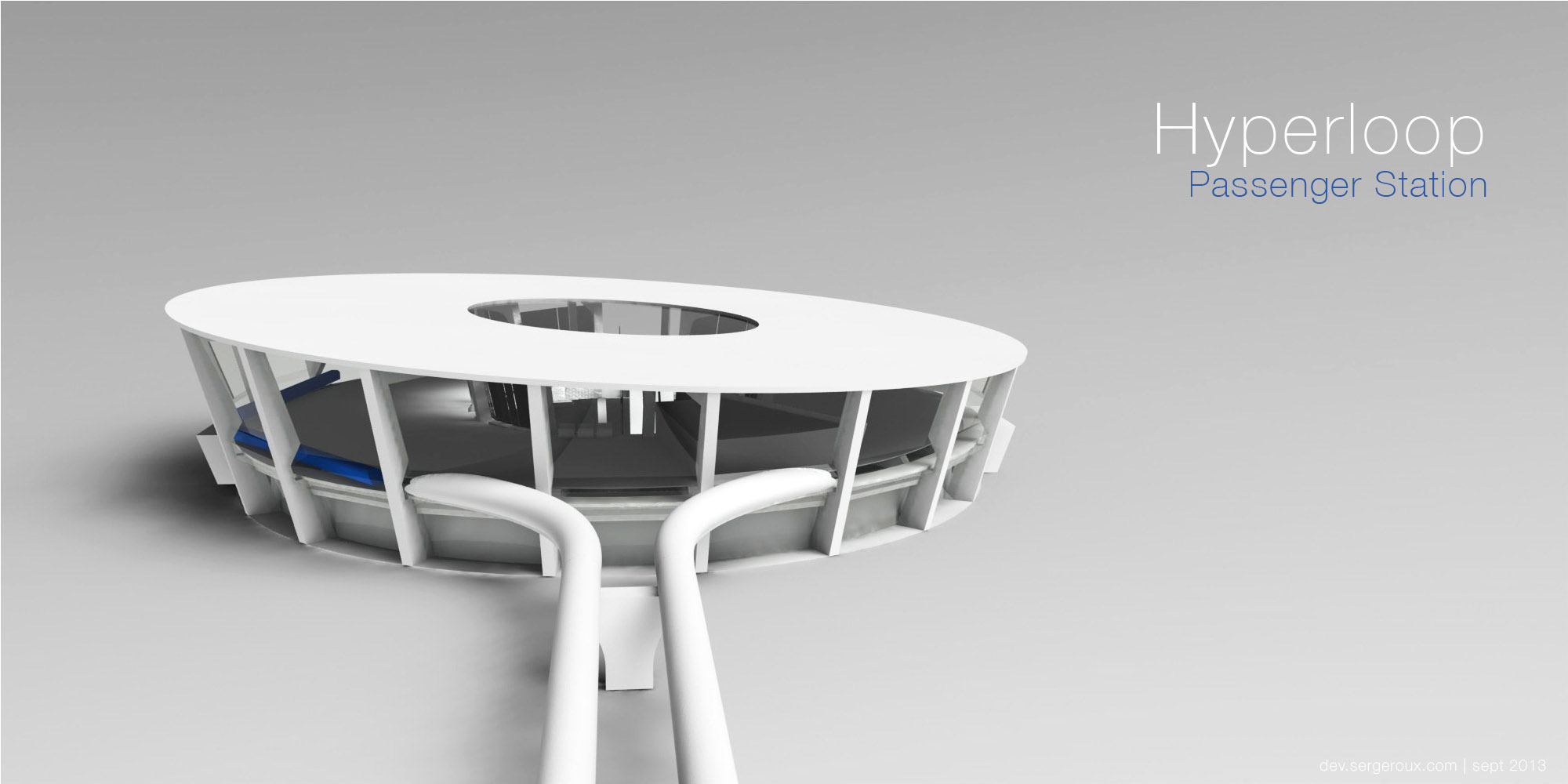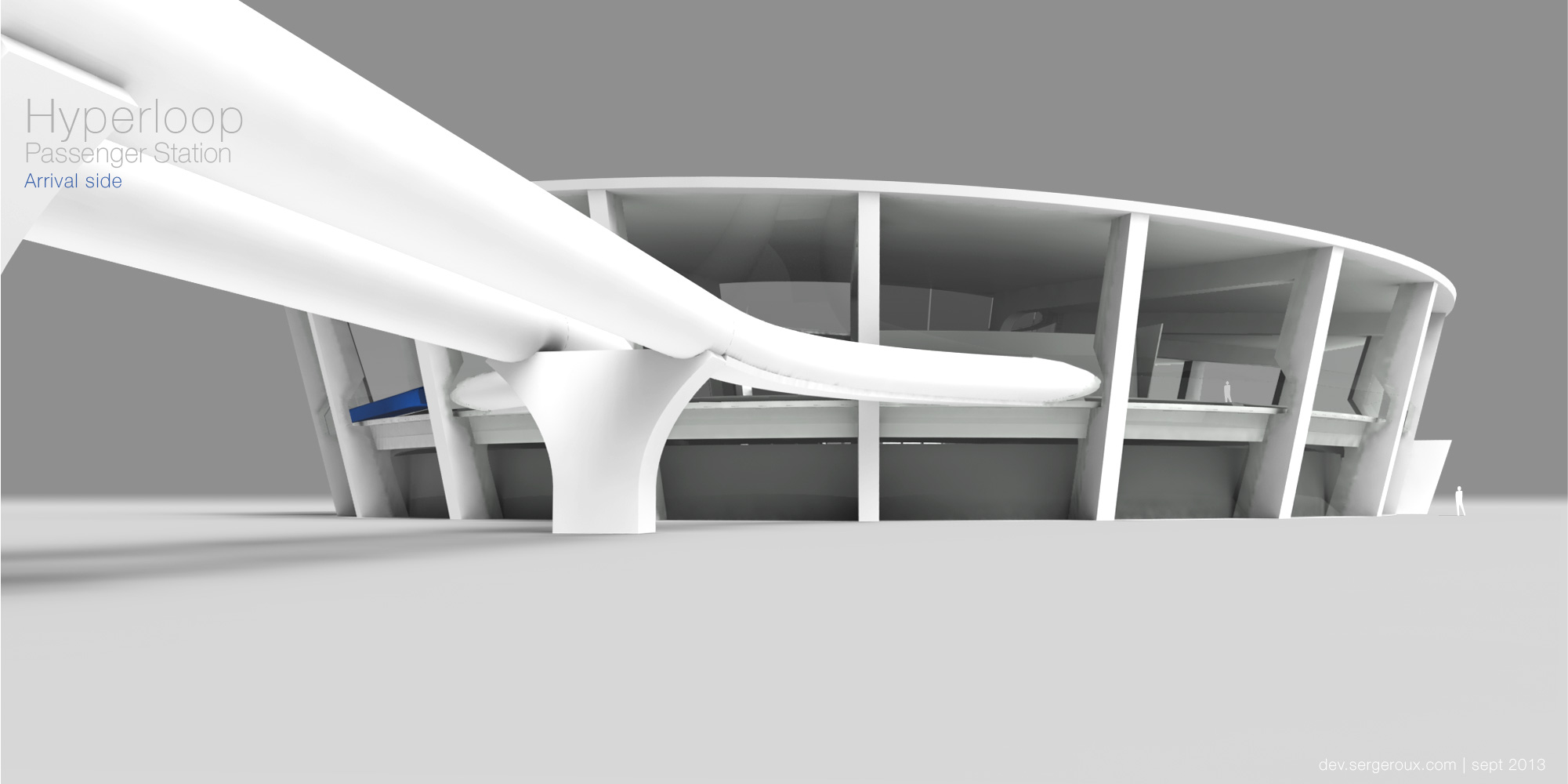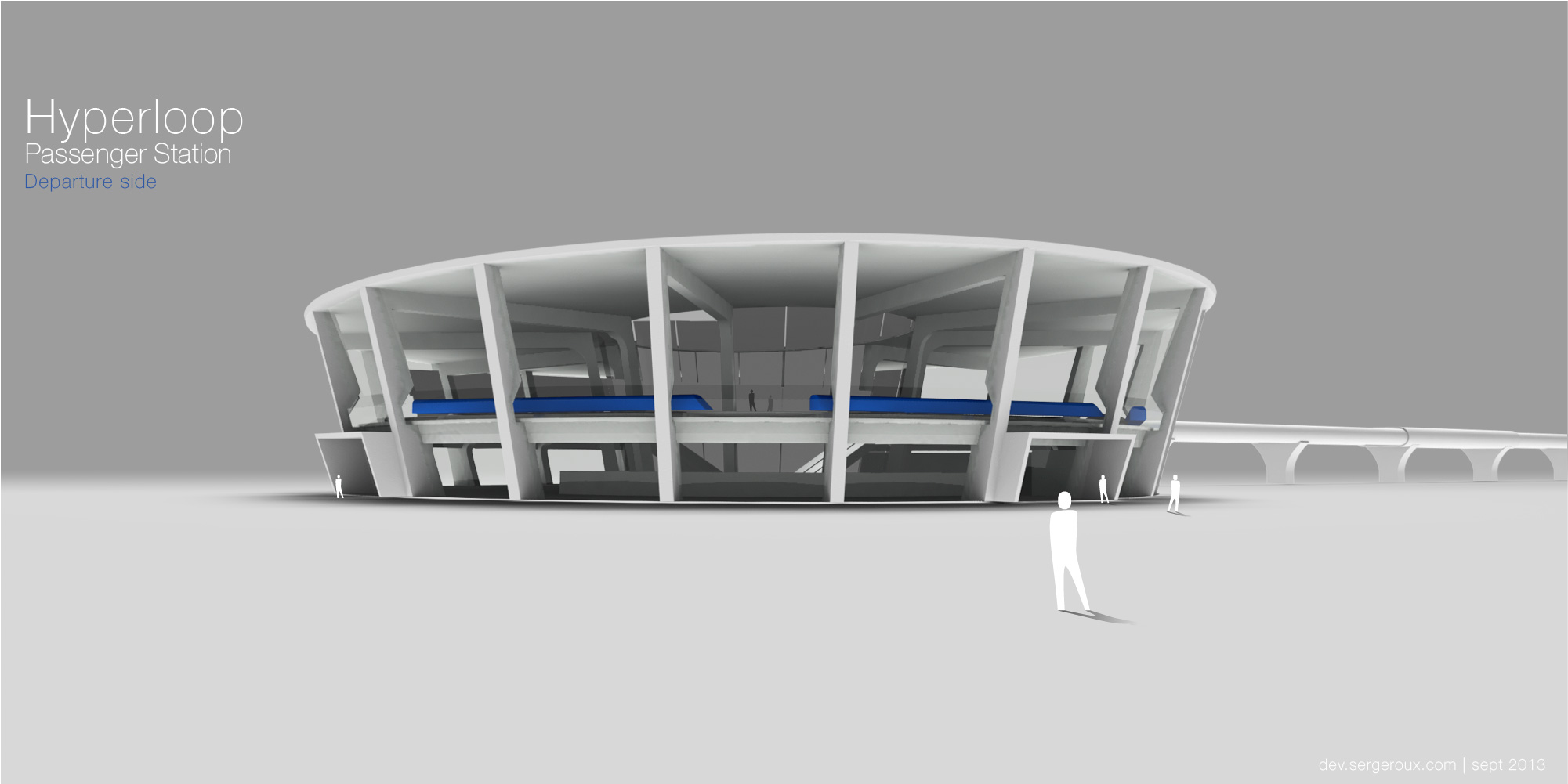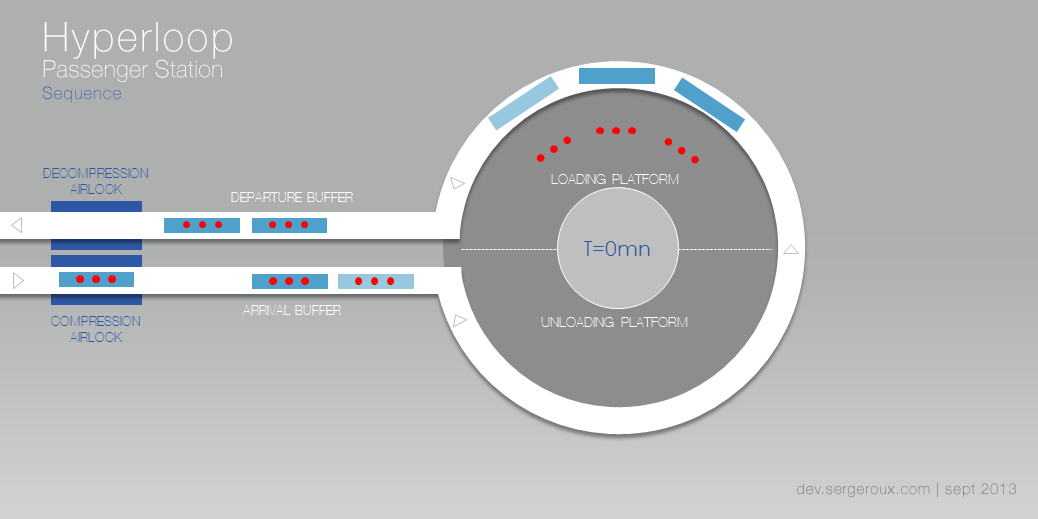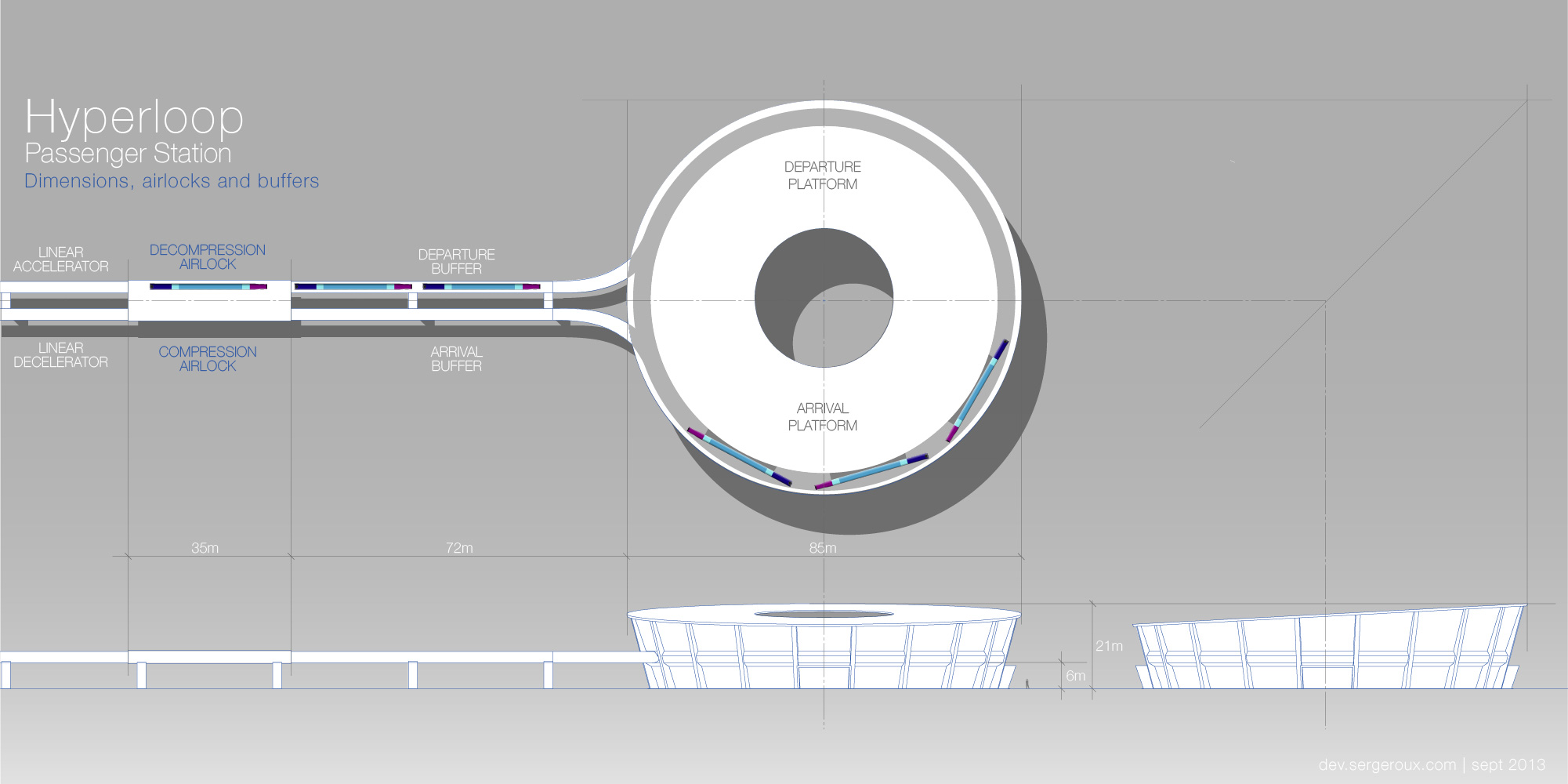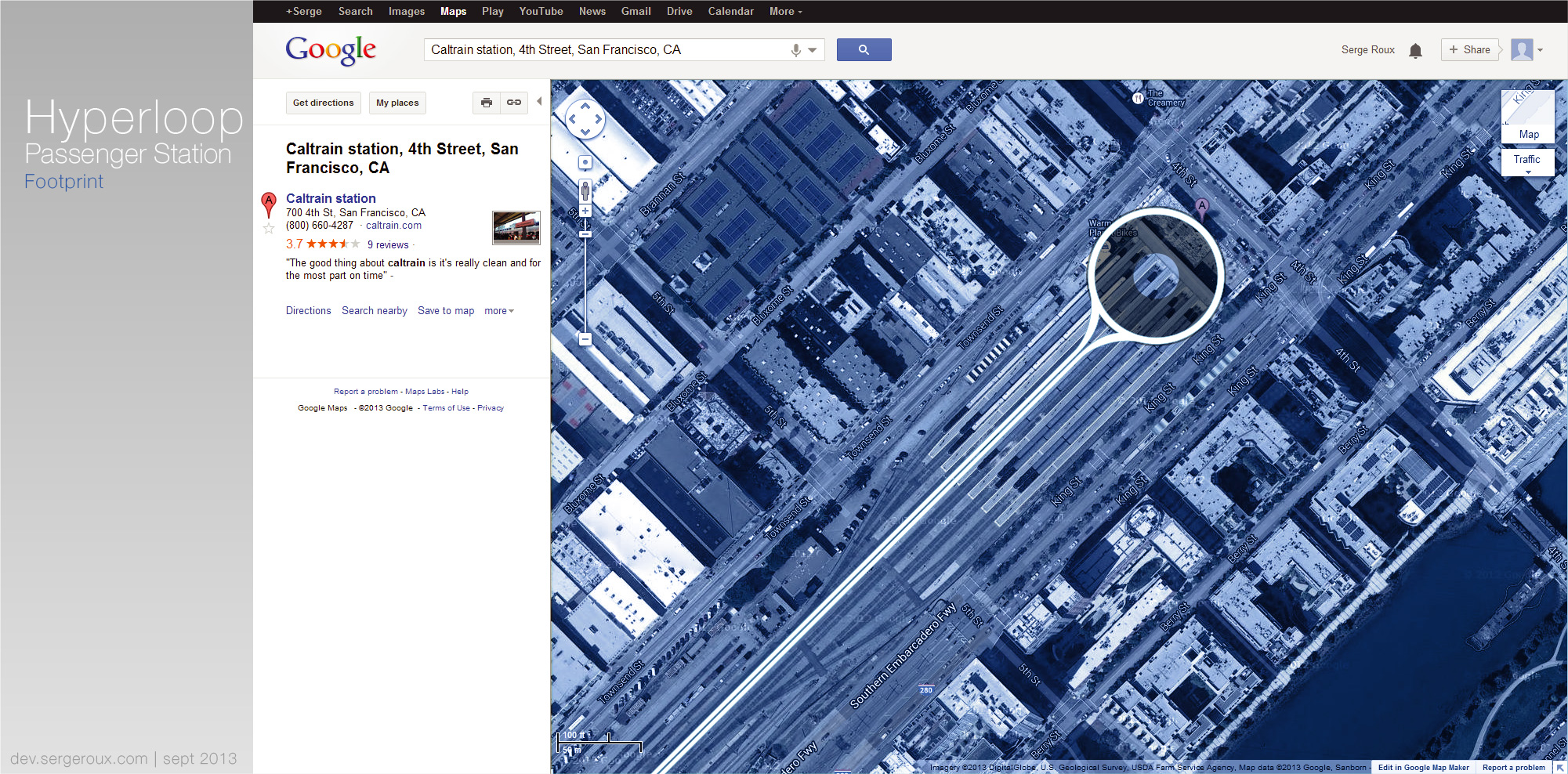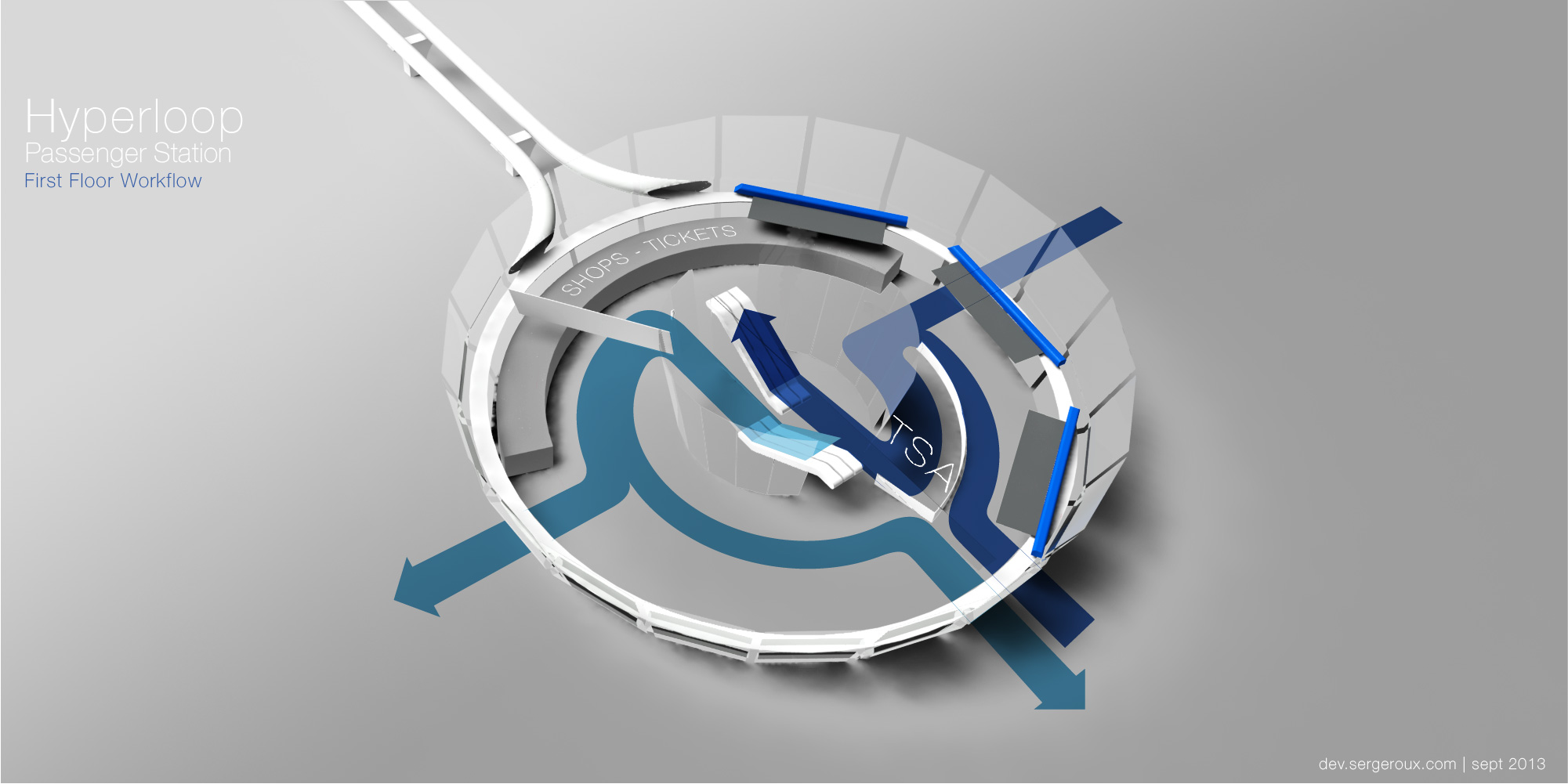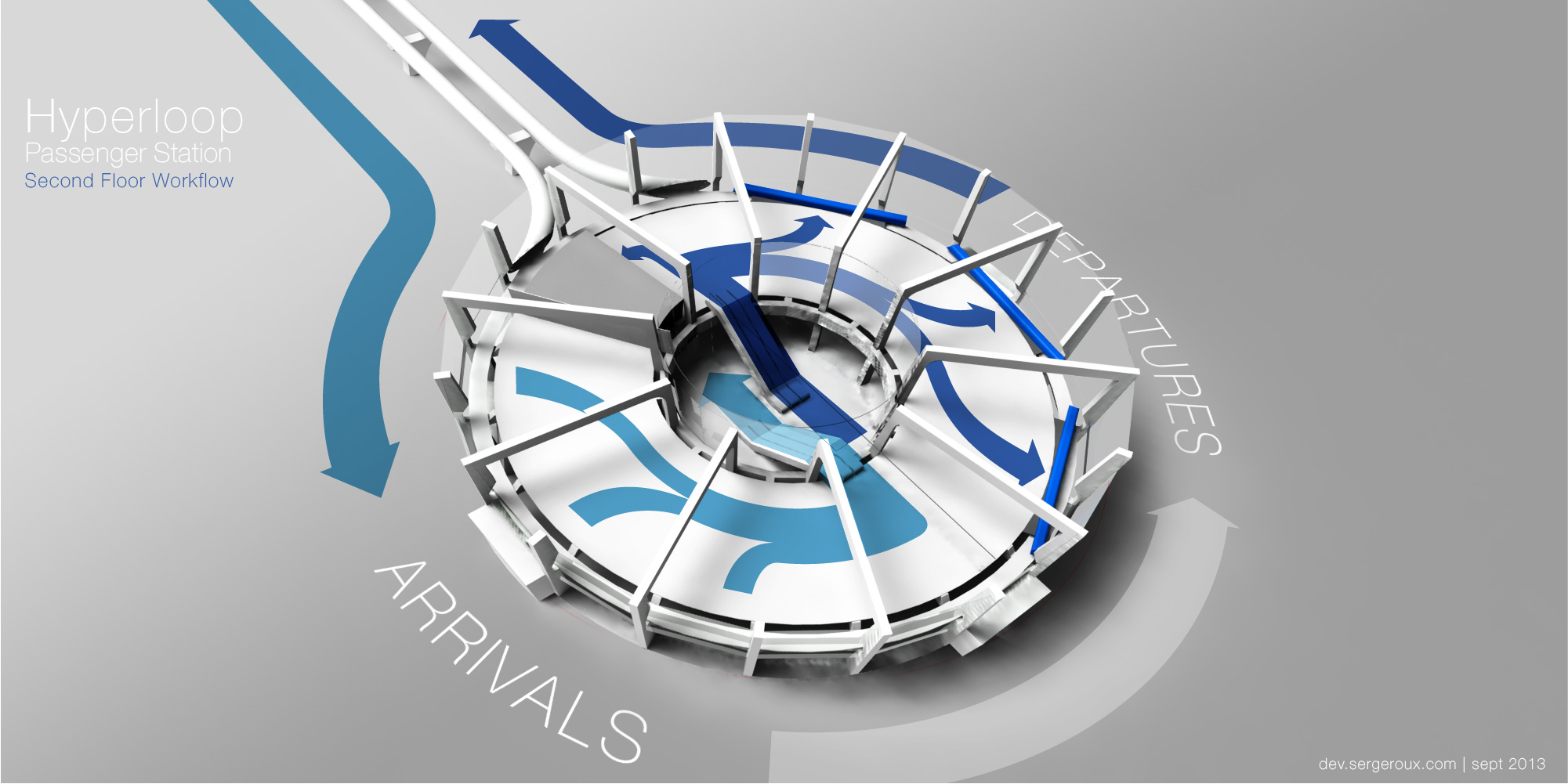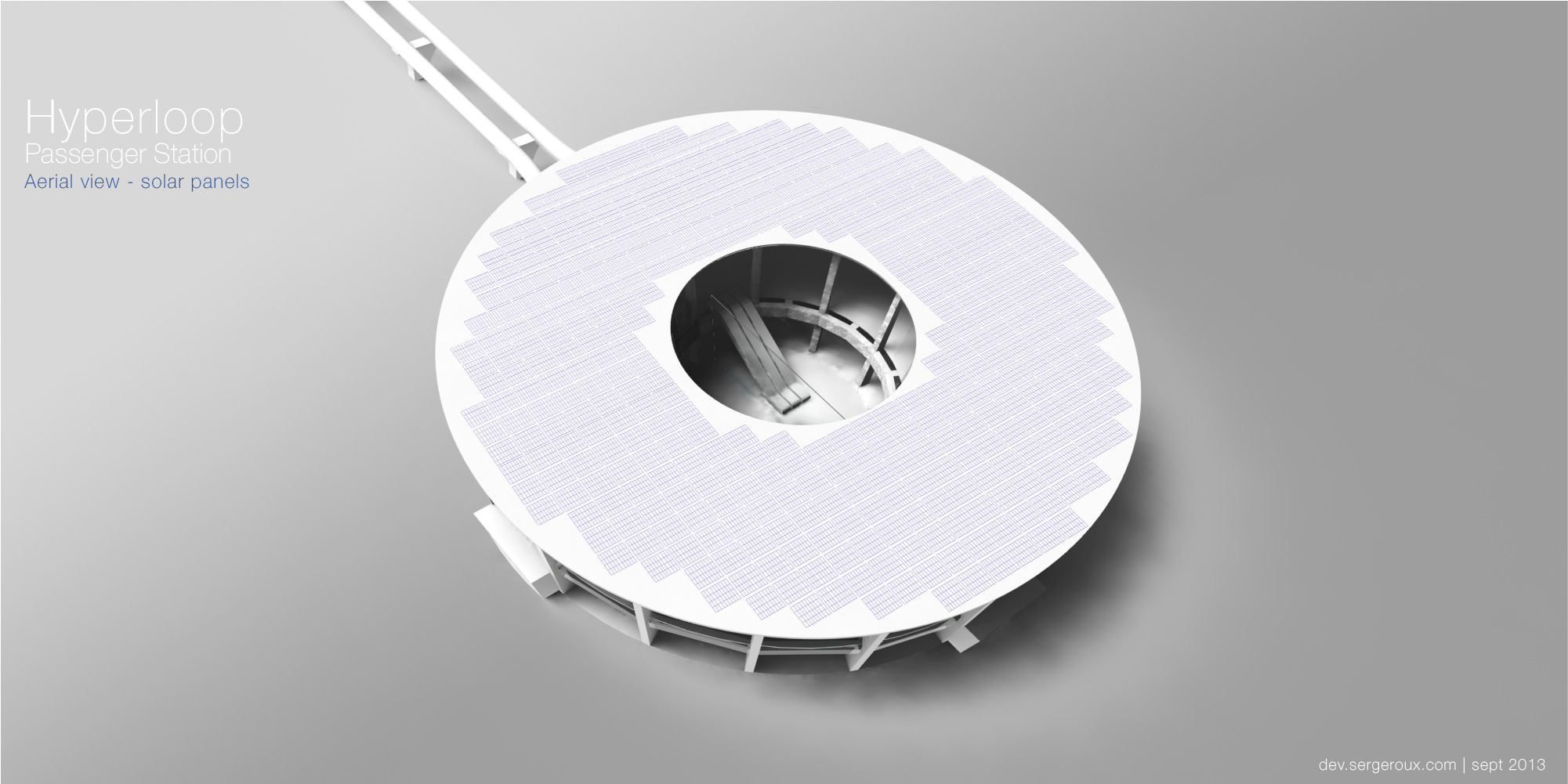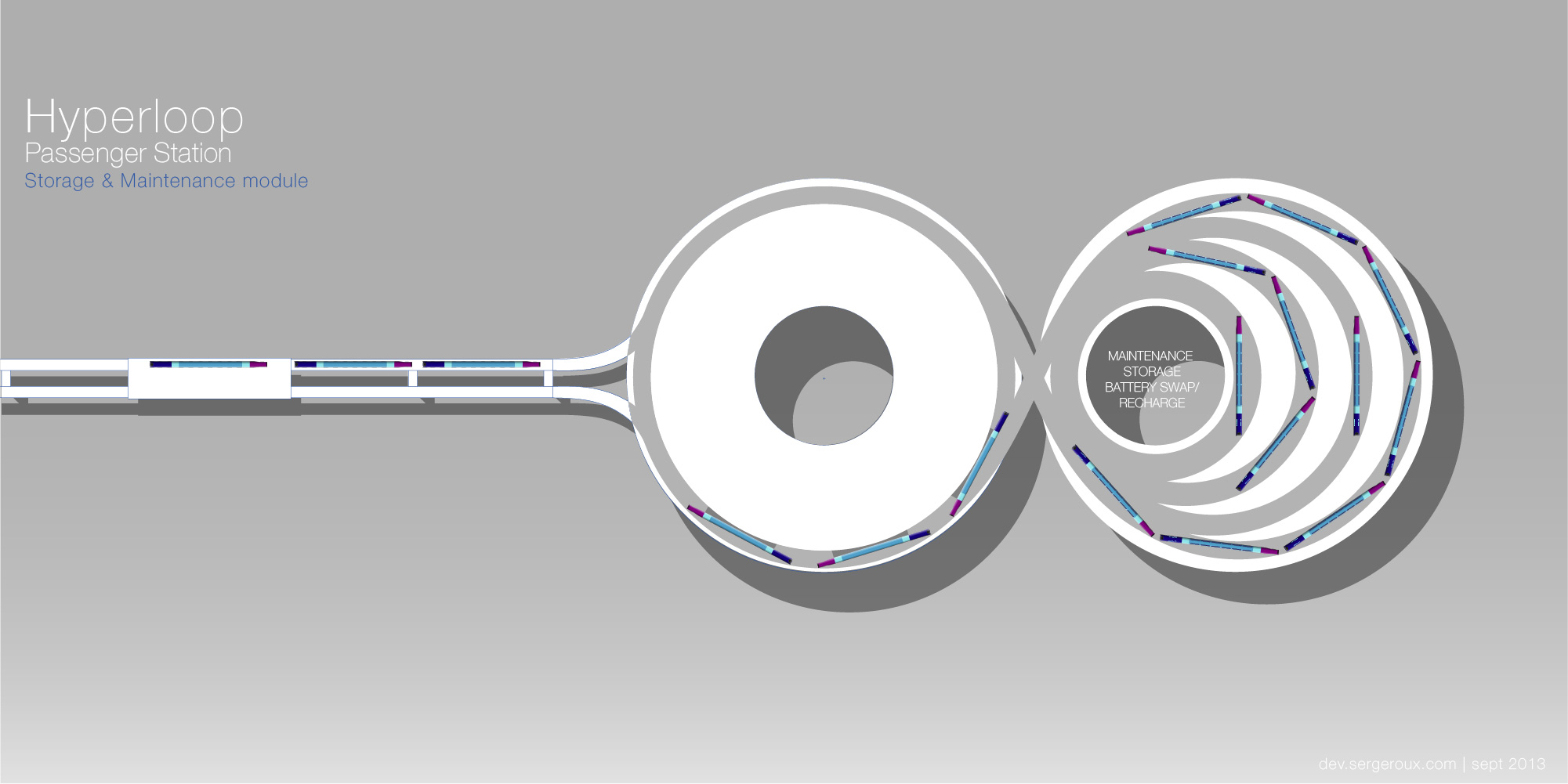This conceptual research stems from the 57-page document released by Elon Musk regarding the Hyperloop project (See PDF here). It addresses in detail a key area of the project that was only briefly described and stated as needing refinement: the Hyperloop Station.
The Hyperloop station depicted here departs from the original suggested design (using parallel platforms and turn tables), while meeting all original requirements of the overall system.
This Hyperloop station concept is based on a looped track (heh!) to create an ever-flowing stream of capsules that people can embark and disembark from. The station is a two-story self-sufficient building with a reduced footprint, concentrating all the amenities within a single looped elevated track that circles the outer walls. To account for the peak-hour passenger flow rates, this station allows for simultaneous access to 3 capsules, creating three parallel flows of passengers.
See WIRED article of this concept station here


